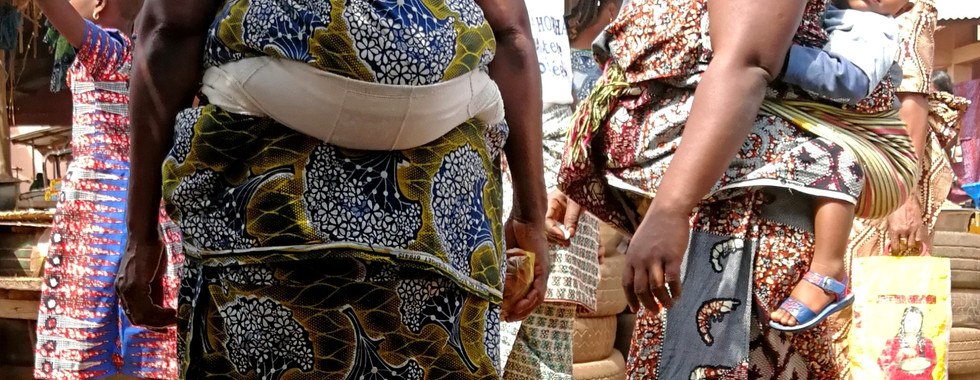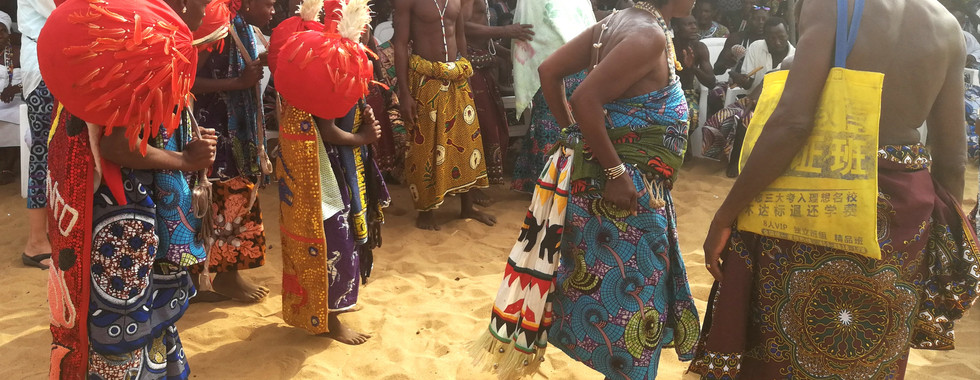Football and Voodoo in Benin
- James van der Borgh
- Jul 22, 2022
- 4 min read
Updated: Dec 1, 2024

The origins of Voodoo can be traced back to Ouidah. It makes sense since this charming town in the south of Benin, an hour from the border with Togo, was one of the main ports used for transporting slaves to the Americas. In fact it was from Ouidah that the last slave ship left the African continent in late 1859 or early 1860 bound for Mobile Alabama. Since slavery had already been banned in the US the Clotilda had to steal into port in the dead of night after which she was scuttled. Nothing remains of the slave market in Ouidah, but the 4km walk along the

‘Route des Esclaves' runs from the town square, where the market was located, to the ocean and is both moving and tragic. Having been purchased and 'branded' at the market the young men and women were walked, terrified and in chains, in what would be their final act in Africa. A short way down is the ‘l’arbre de l’oubli’, ‘the tree of forget’, planted by the king in the 17th century. The slaves had to circle this tree, 9 times for men and 7 for women, in order to make them forget Africa, their culture and their traditions. A bit further on is ‘l’arbre de retour’, ‘the tree of return’ which they circled 3 times so that their spirits would know where to return after they died. Finally they reached the ocean and were held in holding pens until the ships arrived. Many died before transportation. On the beach there is a memorial to the thousands who were transported, The Door of No Return.

Voodoo has its roots in this part of Africa and was officially recognised as a religion in Benin in the mid 1990's. Since then January 10th has become Voodoo Day, marked by a national holiday and wild celebrations. Ouidah, the center of it all, hosts the annual Festival Voudun and I was lucky enough to be in town for this in 2019. Hundreds of practitioners were there from various parts of the world decked out in the colours, patterns and jewelry of their particular sect. It made for a very colourful event. Thousands of tourists attended, mostly from Benin and Togo and, to be honest, it was a bit too staged for me. The music and dancing were the highlights, as well as the fact that it took place on the beach next to the Door of No Return.

100km north of Ouidah is the city of Abomey, the centre of the Dahomey kingdom and one of the main sources of slaves in this part of Arica. It's said that the rulers would sell captured warriors to the Portuguese in exchange for guns and cannons. 20 beautiful women or 8 strong men got you 1 cannon. There is an excellent museum in the old palace that explains this history. Nowadays the locals are serious about their football. I was staying off the main road between Abomey and Bohicon and was lucky enough to be in the area for a match in the Championnat National du Bénin between Tonnerre D'Abomey FC and Beke FC de Bembereke at the Stade Municipal de Bohicon. The one hour walk from my guest house to the ground took me through some small communities and I had some fun interacting with kids, many of whom were kicking a football around. When I arrived at the ground, 30 minutes before the scheduled kick-off the only sign of life was the away teams’ minivan. There was no cost to get in and as people began to flock through the gate, vendors spread out selling nuts, drinks and popsicles.

As with football universally it was a solidly male crowd with a smattering of children and very few women. The atmosphere was lively and colourful and the standard of football was reasonable. Beke FC won the game 0-1 and it all got a bit heated at the final whistle with the police having to come on and get a bit physical with the pitch invaders as they escorted the ref and linesman from the pitch. A moto taxi took me on a fascinating ride through some communities where I stopped and had some street food and a cold beer, ‘Le Beninoise’, before stolling back to my guest house. A very fun afternoon.
The Championnat Nacional de Benin season runs from late October/early November to June, although it tends to be very fluid. I find www.soccerway.com to be a reliable source for schedules, although games are often canceled or rescheduled without warning. The league was held for the first time in 1969. The first round is a double-round robin tournament with 36 teams split into 4 divisions, 9 teams in each. After this, the bottom 5 teams in each group play in a relegation round robin tournament and the top 4 in each group play a round robin for the championship. The current champions are FC Loto from Sakete, just north of Porto Novo.
%20(4000%20%C3%97%202300%20px)%20(4500%20%C3%97%202300%20px)-3_edited.png)



































































Comments